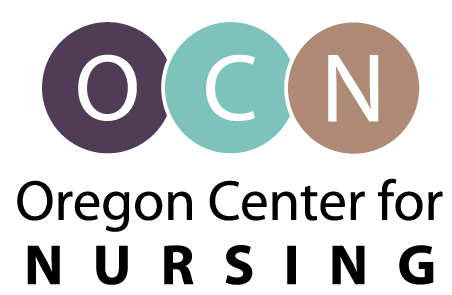The pandemic uncovered the deep-rooted lack of wellness for nurses, which lies within systemic issues such as heavy workloads, poor collaboration, and communication that often hinder a nurse’s ability to provide quality patient care (1,2). Alterations in the development of education, labor, and management models can greatly improve wellness. Some things to consider are:
- Establish a strong academic-practice partnership to collaborate on the evolved preparedness of students so that they are ready for practice environments. (3)
- Increase engagement/structure for nurses to be involved in nursing governance within institutions. (1)
- Create/Evaluate nursing professional development paths in organizations. (4)
- Incorporate nurses in managing nurse staffing. (4)
- Promote practices that do not foster fatigue and burnout related to workload (eliminate mandatory overtime, create staffing minimums, support nurses asking for vacation, etc.). (4)
- Ensure nurse staff are taking breaks. (1,4)
- Schedule 40 hours per week or less. (1)
- Reduce time spent at home/off the clock on work-related tasks. (5)
- Manage staffing ratios. (5)
- Create flexible float pools. (6)
- Focus on the retention of nurses. (6)
- Develop creative work/schedule models that fit how nurses want to work and live. (6)
- Foster transdisciplinary training, education, and communication. (4)
References:
- Kelly, L. A., Weston, M. J., & Gee, P. M. (2021, October). A Nurse Leader’s Guide to Reducing Burnout: Nurse Leader, 19(5), 467–473. https://doi.org/10.1016/j.mnl.2021.03.012
- Dall’Ora, C., Ball, J., Reinius, M., & Griffiths, P. (2020, June 5). Burnout in nursing: a theoretical review. Human Resources for Health, 18(1). https://doi.org/10.1186/s12960-020-00469-9
- Leaver, C. A., Stanley, J. M., & Goodwin Veenema, T. (2022, February 23). Impact of the COVID-19 Pandemic on the Future of Nursing Education. Academic Medicine, 97(3S), S82–S89. https://doi.org/10.1097/acm.0000000000004528
- Schlak, A. E., Rosa, W. E., Rushton, C. H., Poghosyan, L., Root, M. C., & McHugh, M. D. (2022, January). An expanded institutional- and national-level blueprint to address nurse burnout and moral suffering amid the evolving pandemic. Nursing Management, 53(1), 16–27. https://doi.org/10.1097/01.numa.0000805032.15402.b3
- Dyrbye, L. N., Shanafelt, T. D., Sinsky, C. A., Cipriano, P. F., Bhatt, J., Ommaya, A., West, C. P., & Meyers, D. (2017, July 5). Burnout Among Health Care Professionals: A Call to Explore and Address This Underrecognized Threat to Safe, High-Quality Care. NAM Perspectives, 7(7). https://doi.org/10.31478/201707b
- UKG and Wolters Kluwer. (2022). Nursing’s Wake Up Call: Change is Now Non-Negotiable. UKG and Wolters Kluwer.
